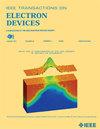Research on Domain Decomposition Method Based on the FETI-DP Algorithm in EOS and MFS
IF 2.9
2区 工程技术
Q2 ENGINEERING, ELECTRICAL & ELECTRONIC
引用次数: 0
Abstract
The electron optics simulator (EOS) and the magnetic focusing simulator (MFS), part of the microwave tube simulator suite (MTSS), use the finite element method (FEM) to calculate electrostatic fields, electron trajectories, and magnetic fields in both 2-D and 3-D models. With the growing demand for high-precision and multiscale computations, EOS and MFS are required to handle problems with numerous meshes, leading to a sharp increase in the number of unknowns in the matrix equation. To tackle this challenge, EOS and MFS have implemented the domain decomposition method (DDM) based on the dual-primal finite element tearing and interconnecting (FETI-DP) algorithm, which is well-suited for parallel computation and is expected to enhance solving efficiency for large-scale analysis. This article presents the implementation and the computational performance of the FETI-DP algorithm in EOS and MFS. Test results show that the FETI-DP algorithm offers significant advantages in computational time in most cases. Additionally, tests demonstrate that EOS and MFS can perform parallel computing, enabling the analysis of large-scale 2-D axisymmetric electron optics systems and significantly accelerating computation speed.EOS和MFS中基于FETI-DP算法的区域分解方法研究
电子光学模拟器(EOS)和磁聚焦模拟器(MFS)是微波管模拟器套件(MTSS)的一部分,使用有限元法(FEM)计算二维和三维模型中的静电场、电子轨迹和磁场。随着对高精度和多尺度计算的需求日益增长,EOS和MFS需要处理大量网格的问题,导致矩阵方程中的未知数数量急剧增加。为了解决这一挑战,EOS和MFS实现了基于双原始有限元撕裂和互连(FETI-DP)算法的域分解方法(DDM),该方法非常适合并行计算,有望提高大规模分析的求解效率。本文介绍了FETI-DP算法在EOS和MFS中的实现及其计算性能。测试结果表明,在大多数情况下,FETI-DP算法在计算时间上具有显著的优势。此外,测试表明EOS和MFS可以进行并行计算,能够分析大规模二维轴对称电子光学系统,并显着提高计算速度。
本文章由计算机程序翻译,如有差异,请以英文原文为准。
求助全文
约1分钟内获得全文
求助全文
来源期刊

IEEE Transactions on Electron Devices
工程技术-工程:电子与电气
CiteScore
5.80
自引率
16.10%
发文量
937
审稿时长
3.8 months
期刊介绍:
IEEE Transactions on Electron Devices publishes original and significant contributions relating to the theory, modeling, design, performance and reliability of electron and ion integrated circuit devices and interconnects, involving insulators, metals, organic materials, micro-plasmas, semiconductors, quantum-effect structures, vacuum devices, and emerging materials with applications in bioelectronics, biomedical electronics, computation, communications, displays, microelectromechanics, imaging, micro-actuators, nanoelectronics, optoelectronics, photovoltaics, power ICs and micro-sensors. Tutorial and review papers on these subjects are also published and occasional special issues appear to present a collection of papers which treat particular areas in more depth and breadth.
 求助内容:
求助内容: 应助结果提醒方式:
应助结果提醒方式:


